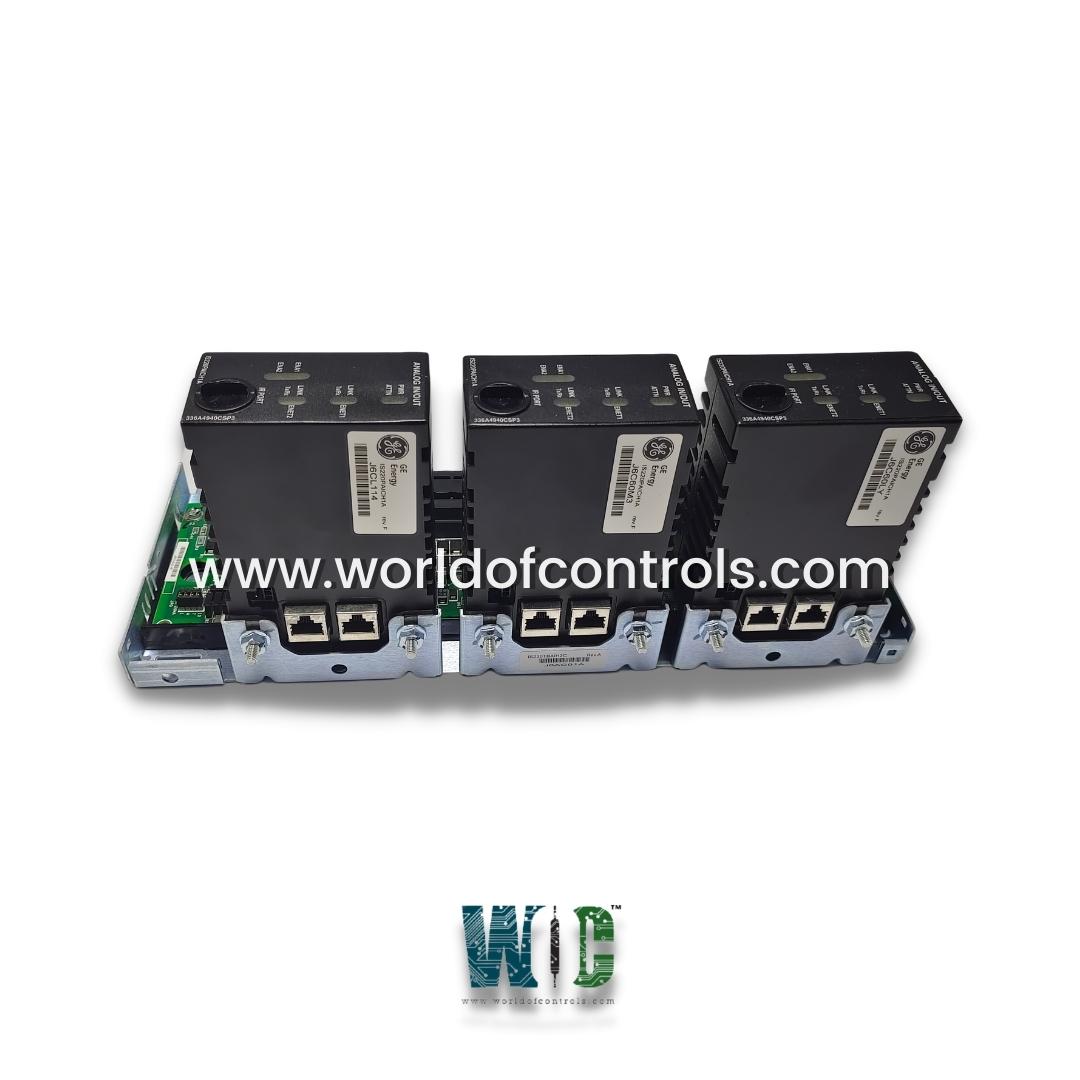SPECIFICATIONS
Part No.: IS230TBAIH3C
Manufacturer: General Electric
Product Type: Analog I/O Assembly
Temperature: -30 to 65 oC
Size: 10.16 cm wide x 33.02 cm high
Number of channels: 12
Technology: Surface-mount
Availability: In Stock
Manual: GEH-6721
Country of Manufacture: United States (USA)
Series: Mark VIe
Functional Description
IS230TBAIH3C is an Analog I/O Assembly developed by GE. It is a part of Mark VIe control system. The Analog Input terminal board is a versatile and robust component designed to facilitate the connection and processing of analog signals in various industrial applications. With its capability to support 10 analog inputs and two outputs, it provides a comprehensive solution for monitoring and controlling critical process variables.
Features
- The 10 analog inputs offer remarkable flexibility as they can accommodate different types of transmitters, including two-wire, three-wire, four-wire, and externally powered transmitters. This compatibility allows users to seamlessly integrate a wide range of sensors and transmitters, making the terminal board suitable for diverse measurement needs.
- The analog outputs on the board can be conveniently configured to deliver either 0-20 mA or 0-200 mA current. This configurability enables users to adapt the board to specific system requirements or industry standards, offering precise and accurate control over the analog output signals.
- To ensure reliable and stable measurements, both the inputs and outputs are equipped with noise suppression circuitry. This circuitry serves as a protective shield against electrical surges and high-frequency noise that may occur in industrial environments. By mitigating these unwanted disturbances, the terminal board maintains accurate and consistent analog signals, preventing erroneous readings and enhancing overall system performance.
- It processes the total current signal from the measuring shunt and presents it to the electronics or central control unit. The electronics then regulate this total current signal based on the commanded setpoint. This regulation ensures that the analog inputs are precisely controlled and maintained at the desired values, providing accurate and reliable data to the control system.
Installation
- The Terminal Board for Analog Inputs and Outputs features a robust and convenient design, facilitating the direct wiring of 10 analog inputs and two outputs to two I/O terminal blocks securely mounted on the board. Each terminal block is firmly held in place by two screws, ensuring stable and reliable connections. These terminal blocks are designed to accommodate wires up to #12 AWG, providing flexibility for various wire sizes commonly used in industrial applications.
- Moreover, the terminal blocks offer 24 terminals each, allowing for multiple connections. This configuration makes it possible to connect a wide range of analog devices to the terminal board, making it versatile for diverse applications. Adjacent to each terminal block, a shield terminal attachment point is thoughtfully provided. This attachment point is essential for grounding and shielding the analog inputs and outputs, protecting them from electromagnetic interference and ensuring signal integrity in noisy industrial The Terminal Board for Analog Inputs and Outputs supports several types of analog inputs and outputs, catering to a wide range of measurement and control needs:
- Analog Input, Two-Wire Transmitter: This input type accommodates two-wire transmitters, commonly used for simple sensor applications where power and signal are carried over the same two wires.
- Analog Input, Three-Wire Transmitter: Three-wire transmitters require a separate power supply and two signal wires. The terminal board effectively handles such setups, making it suitable for more advanced sensing applications.
- Analog Input, Four-Wire Transmitter: Four-wire transmitters have separate wires for power and signal, providing greater accuracy and stability. The terminal board readily accepts such connections, offering precision in demanding measurement tasks.
- Analog Input, Externally Powered Transmitter: Some transmitters require an external power source. The terminal board readily accommodates such externally powered transmitters, ensuring seamless integration in the control system.
- Analog Output, 0-20 mA: For analog output applications, the terminal board offers the option to set the output in the 0-20 mA range, enabling precise control and regulation.
- Analog Output, 0-200 mA: For applications demanding higher output current, the terminal board also caters to the 0-200 mA range, providing increased capability in controlling external devices.
Compatibility
- TMR and Simplex Systems - suitable for both Simplex and Triple Modular Redundant (TMR) systems. However, most manuals predominantly discuss its usage in TMR configurations.
- Module Interconnectivity: It can be attached to PAIC or YAIC Analog I/O packs, with compatibility with PAIC model.
World of Controls has the most comprehensive collection of GE Mark VIe components. Please contact WOC as soon as possible if you require any extra information.
Frequently Asked Questions
What is IS230TBAIH3C?
It is an Analog I/O Assembly developed by GE
What types of transmitters can the terminal board accommodate for analog inputs?
The terminal board offers remarkable flexibility and can accommodate different types of transmitters, including two-wire, three-wire, four-wire, and externally powered transmitters. This compatibility allows users to seamlessly integrate a wide range of sensors and transmitters, making the terminal board suitable for diverse measurement needs.
Can the analog outputs on the terminal board be customized to specific current ranges?
Yes, the analog outputs on the terminal board are highly configurable. Users have the convenience of adjusting the output to either 0-20 mA or 0-200 mA current ranges. This configurability enables the board to adapt to specific system requirements or industry standards, offering precise and accurate control over the analog output signals.
How does the noise suppression circuitry benefit the terminal board's performance?
The terminal board is designed to operate reliably and stably in industrial environments. To achieve this, both the analog inputs and outputs are equipped with noise suppression circuitry. This circuitry acts as a protective shield against electrical surges and high-frequency noise that may be present in industrial settings. By mitigating these unwanted disturbances, the terminal board maintains accurate and consistent analog signals, preventing erroneous readings and enhancing overall system performance.
